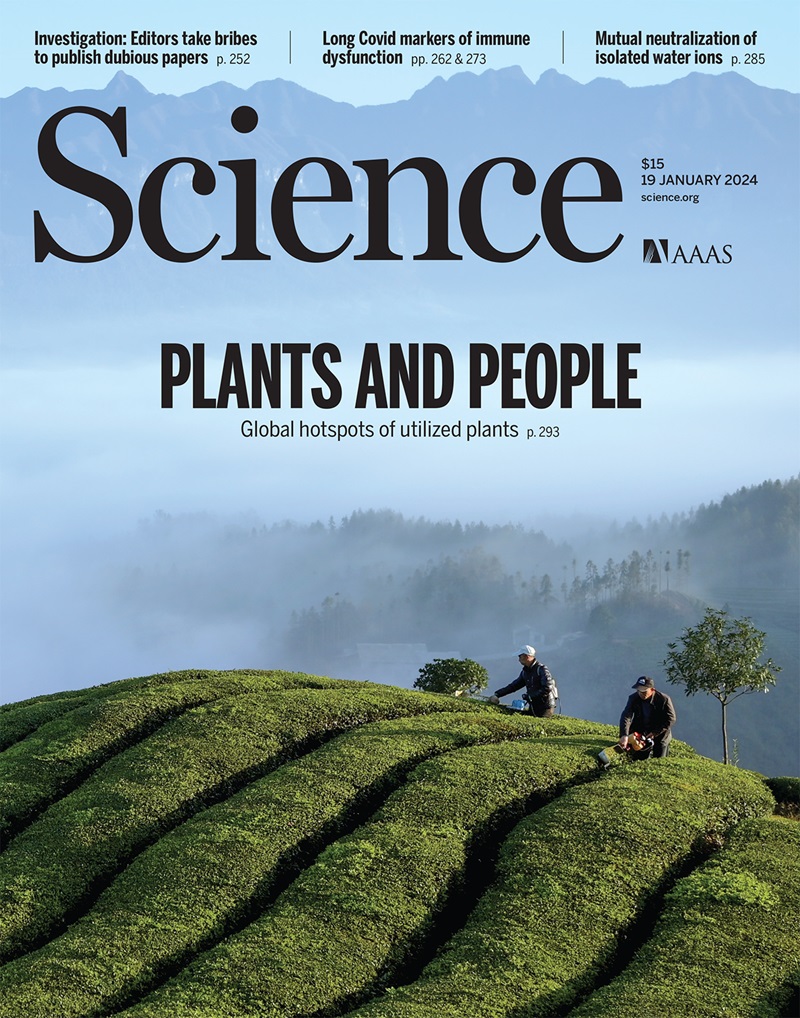在物种最丰富的北美地区,鸟类数量减少最多
IF 44.7
1区 综合性期刊
Q1 MULTIDISCIPLINARY SCIENCES
Science
Pub Date : 2025-05-01
引用次数: 0
摘要
解决北美鸟类数量下降问题的努力一直受到有关种群变化的精细信息有限的限制。利用eBird的参与式科学数据,我们估算了2007年至2021年495种鸟类在27公里分辨率下的大陆种群变化和相对丰度。结果显示,趋势的空间异质性很高,以前未被发现;尽管75%的物种数量在减少,但97%的物种数量在显著增加和显著减少的区域之间存在差异。在物种最丰富的据点,种群数量往往会急剧下降,但在物种最不丰富的地方,它们的生存状况会更好。这些高分辨率的趋势提高了我们了解种群动态的能力,优先考虑恢复工作,并在迫切需要采取行动时指导保护。本文章由计算机程序翻译,如有差异,请以英文原文为准。
North American bird declines are greatest where species are most abundant
Efforts to address declines of North American birds have been constrained by limited availability of fine-scale information about population change. By using participatory science data from eBird, we estimated continental population change and relative abundance at 27-kilometer resolution for 495 bird species from 2007 to 2021. Results revealed high and previously undetected spatial heterogeneity in trends; although 75% of species were declining, 97% of species showed separate areas of significantly increasing and decreasing populations. Populations tended to decline most steeply in strongholds where species were most abundant, yet they fared better where species were least abundant. These high-resolution trends improve our ability to understand population dynamics, prioritize recovery efforts, and guide conservation at a time when action is urgently needed.
求助全文
通过发布文献求助,成功后即可免费获取论文全文。
去求助
来源期刊

Science
综合性期刊-综合性期刊
CiteScore
61.10
自引率
0.90%
发文量
0
审稿时长
2.1 months
期刊介绍:
Science is a leading outlet for scientific news, commentary, and cutting-edge research. Through its print and online incarnations, Science reaches an estimated worldwide readership of more than one million. Science’s authorship is global too, and its articles consistently rank among the world's most cited research.
Science serves as a forum for discussion of important issues related to the advancement of science by publishing material on which a consensus has been reached as well as including the presentation of minority or conflicting points of view. Accordingly, all articles published in Science—including editorials, news and comment, and book reviews—are signed and reflect the individual views of the authors and not official points of view adopted by AAAS or the institutions with which the authors are affiliated.
Science seeks to publish those papers that are most influential in their fields or across fields and that will significantly advance scientific understanding. Selected papers should present novel and broadly important data, syntheses, or concepts. They should merit recognition by the wider scientific community and general public provided by publication in Science, beyond that provided by specialty journals. Science welcomes submissions from all fields of science and from any source. The editors are committed to the prompt evaluation and publication of submitted papers while upholding high standards that support reproducibility of published research. Science is published weekly; selected papers are published online ahead of print.
 求助内容:
求助内容: 应助结果提醒方式:
应助结果提醒方式:


